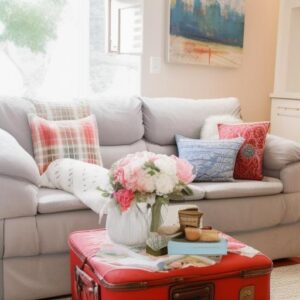Interior design serves as a form of self-expression, allowing individuals to create unique spaces that reflect their personality and aesthetics. Across the globe, various design styles have evolved, each showcasing distinctive characteristics rooted in cultural influences and historical significance. Among these, European interior design stands out for its timeless elegance and rich cultural heritage. This article delves into the world of European interior design, exploring its origins, key elements, and regional variations. From the opulence of Baroque to the simplicity of Scandinavian design, let us embark on a journey of discovery through the captivating realms of European interior design.
European Interior Design: An Overview
European interior design encompasses a wide range of styles that have developed throughout the centuries, influenced by historical events, artistic movements, and cultural traditions. From the grandeur of palatial residences to the quaint charm of rural cottages, the diversity of European design is truly remarkable. An amalgamation of styles hailing from different regions, European interior design exhibits a unique blend of sophistication, luxury, and functionality.
Regional Influences on European Interior Design
1. Baroque: The Extravagance of Grandeur
The Baroque period, originating in Italy during the 17th century, left an indelible mark on European interior design. Characterized by ornate detailing, opulent furnishings, and a sense of theatricality, Baroque interiors exude grandeur and luxury. Elaborately carved furniture, gold accents, and intricate frescoes were hallmarks of this style, with prominent examples found throughout palaces and chateaus across Europe.
2. Rococo: The Playful Elegance
Following the Baroque era, the Rococo style gained popularity in the 18th century, particularly in France. Rococo interiors embraced a more playful and light-hearted approach, featuring pastel colors, whimsical motifs, and intricate decorative renderings. This style emphasized asymmetry, ornate detailing, and a delicate balance between elegance and charm.
3. Neoclassical: A Return to Antiquity
The Neoclassical style originated in the late 18th century as a reaction against the exuberance of Rococo. Inspired by the classical architecture of ancient Greece and Rome, Neoclassical interiors focused on simplicity, clean lines, and a sense of symmetry. This style relied on neutral color palettes, iconic columns, and graceful proportions, aiming to evoke a sense of harmony and order.
4. Art Nouveau: The Organic Beauty
Emerging in the late 19th century and early 20th century, Art Nouveau introduced a departure from the preceding styles. Emphasizing organic forms, flowing lines, and nature-inspired motifs, Art Nouveau interiors sought to create a harmonious integration between art and everyday life. Colorful stained glass windows, intricate ironwork, and decorative floral patterns were prominent features, with notable examples found in the works of renowned architect and designer, Antoni Gaudí.
5. Scandinavian: Minimalism and Functionality
In stark contrast to the lavishness of Baroque and Rococo, Scandinavian design represents simplicity, minimalism, and functionalism. Originating in the Nordic countries, this style gained global recognition in the mid-20th century. Scandinavian interiors prioritize natural light, clean lines, and the use of natural materials such as wood and leather. Simplicity, functionality, and a harmonious relationship with nature are core principles guiding this design aesthetic.
6. Mediterranean: The Timeless Charm
The Mediterranean style draws inspiration from countries along the Mediterranean coast, such as Italy, Spain, and Greece. This style embodies a warm and welcoming atmosphere, characterized by earthy tones, textured surfaces, and rustic elements. Bright blue accents, terracotta tiles, and wrought iron accents are key elements that reflect the relaxed and carefree ambiance of coastal living.
Blending Styles: The Modern European Interior
As design trends evolve, contemporary European interior design often merges various historical styles to create unique and eclectic spaces. The juxtaposition of old and new, traditional and contemporary, allows for personal expression and creates visually captivating interiors. By combining antique furniture with modern fixtures or integrating regional accents into sleek, minimalistic environments, designers can forge a fresh and distinctive aesthetic that pays homage to Europe’s rich design heritage while appealing to the contemporary sensibilities of today.
European interior design remains a fertile ground for inspiration, offering a wealth of diverse styles that capture the essence of each region’s cultural and historical context. From the lavishness of Baroque to the simplicity of Scandinavian design, European interiors showcase an enduring elegance that transcends time. By understanding the origins, elements, and regional influences of European interior design, both professionals and enthusiasts can gain valuable insights to create captivating spaces that reflect their personal style and pay homage to the continent’s incredibly rich design legacy.



